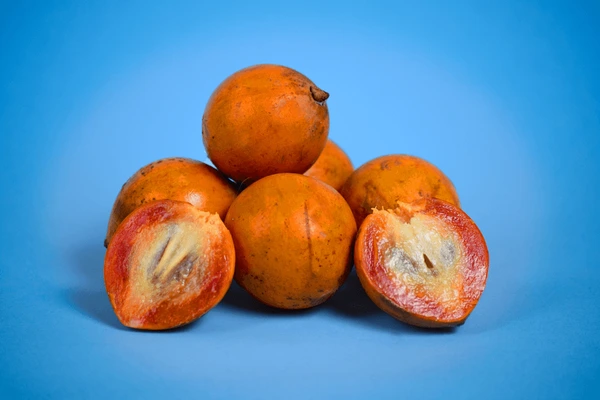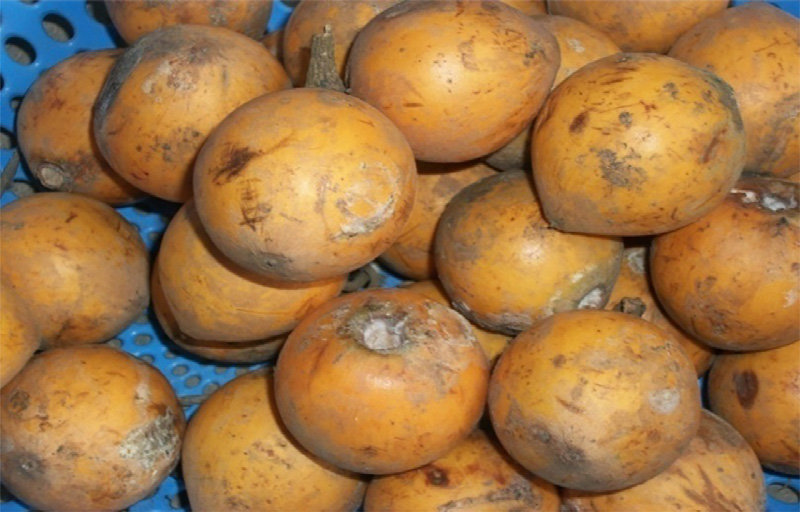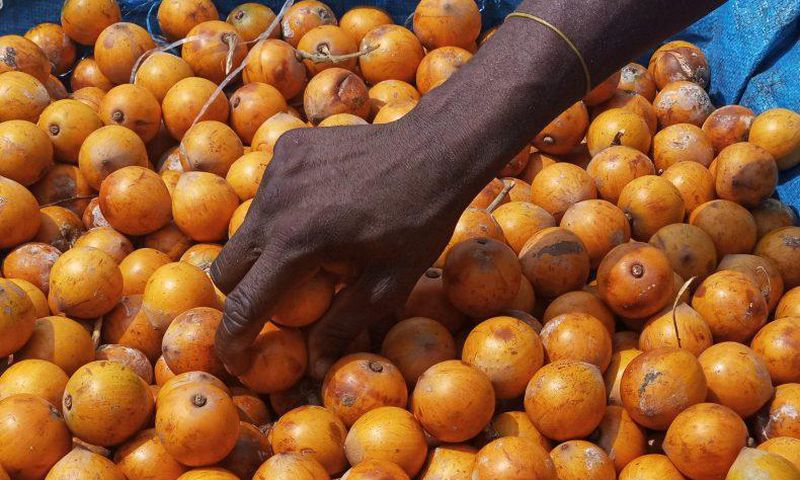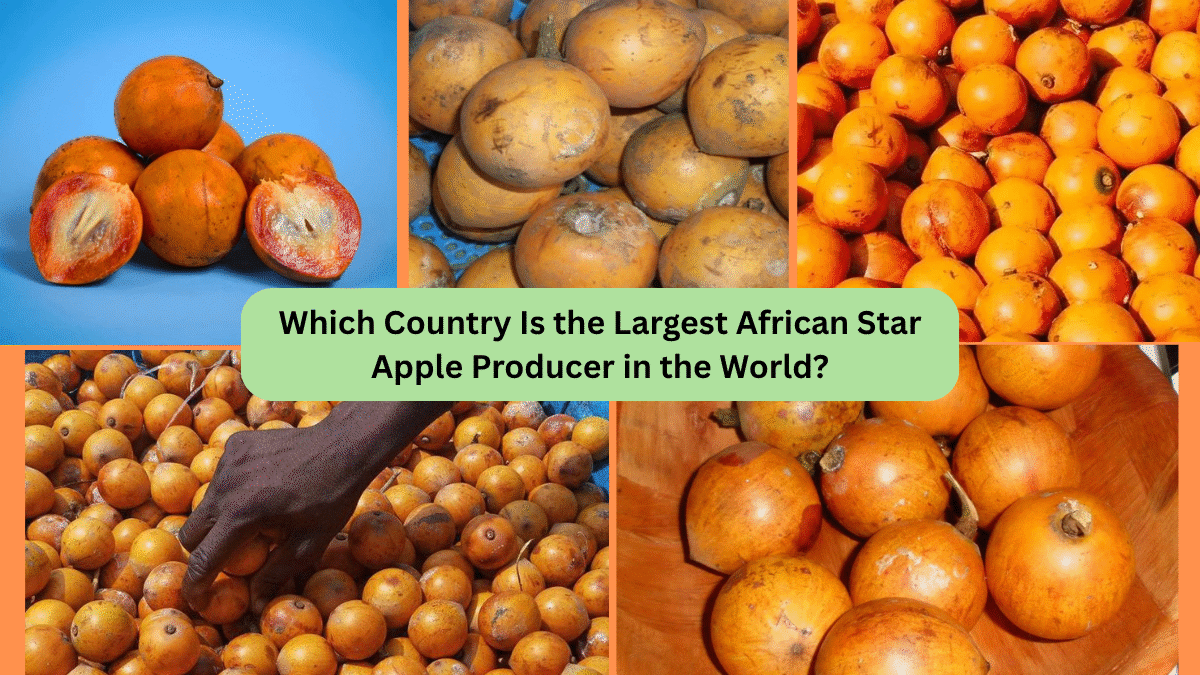The world of tropical and indigenous fruits is rich with unique flavors, nutritional benefits, and deep cultural significance. Among these is the intriguing African Star Apple, a vibrant fruit known for its distinctive taste, health benefits, and popularity in West African markets. Also known by various local names such as Agbalumo in Nigeria and Alasa in Ghana, this fruit is a cherished seasonal favorite across several African nations. But where is this remarkable fruit most abundantly produced? In this article, we explore which country is the largest African Star Apple producer in the world, its origins, nutritional benefits, cultural importance, and global potential.
What is the African Star Apple?

The African Star Apple (Chrysophyllum albidum) is a tropical fruit native to West Africa. It grows on evergreen trees that reach heights of up to 30 meters. The fruit itself is typically round to oval-shaped, about the size of a small orange, with a smooth, thin, orange or yellowish-green skin when ripe. Inside, it holds a soft, juicy pulp ranging from creamy white to orange, surrounding one to five hard, shiny seeds.
- Scientific Name: Chrysophyllum albidum
- Common Names: African Star Apple, Agbalumo (Nigeria), Alasa (Ghana), Udara (Igbo), Ehya (Sierra Leone)
- Native Region: West Africa
- Uses: Fresh consumption, traditional medicine, local beverages, jams
Its flavor is distinctly sweet-sour, with a slightly astringent edge — a beloved characteristic among its many fans.
Which Country Is the Largest African Star Apple Producer in the World?
Nigeria holds the title of the largest African Star Apple producer in the world. This comes as no surprise, given the fruit’s deep cultural, culinary, and commercial importance within the country. Nigeria’s ideal tropical climate, fertile soils, and widespread traditional cultivation make it the undisputed leader in the production of this indigenous fruit.
Why Nigeria?

Several factors explain Nigeria’s dominance in African Star Apple production:
- Native Habitat: As one of the primary native homes of Chrysophyllum albidum, Nigeria has naturally favorable conditions for the fruit’s growth.
- Cultural Importance: Known locally as Agbalumo in Yoruba and Udara in Igbo, the fruit is integral to local cuisine, traditional medicine, and folklore.
- Widespread Cultivation: African Star Apple trees are commonly found in home gardens, village farmlands, and public spaces throughout Nigeria, particularly in the southern and middle-belt regions.
- High Market Demand: The fruit’s popularity during its harvest season ensures high consumption rates, driving continual planting and maintenance of the trees.
Geographic Distribution of African Star Apple in Nigeria
The fruit thrives predominantly in the southern and central parts of Nigeria, where the tropical climate provides the ideal environment for its growth.
Major producing regions include:
- Oyo
- Osun
- Ondo
- Ekiti
- Lagos
- Anambra
- Imo
- Delta
- Edo
- Kogi
- Benue
Harvest season: The African Star Apple is a seasonal fruit, typically harvested between December and April, with peak availability in January and February.
African Star Apple in Nigerian Culture

In Nigeria, the African Star Apple transcends mere consumption. It is a cherished symbol of childhood, local enterprise, and natural health remedies.
Culinary Use
The fruit is mostly consumed fresh. Vendors can be found by roadsides and in markets selling bunches of Agbalumo during its season. Some people prefer the early sour-tangy fruits, while others wait for the later, sweeter varieties.
Popular local preparations include:
- Fresh snacking
- Natural flavoring for drinks
- Making jams and preserves
- Traditional fruit drinks
Traditional Medicine
In Nigerian traditional medicine, different parts of the African Star Apple tree are used for various remedies:
- The bark and leaves: Used for treating skin infections and diarrhea.
- The pulp: Believed to help with weight management and blood sugar control.
- The seeds: Crushed and used in herbal formulations.
Is African Star Apple Grown Outside Nigeria?
Yes — while Nigeria is the largest producer, African Star Apple is cultivated in other West African countries such as:
- Ghana: Known locally as Alasa, it is a favorite street snack.
- Cameroon
- Benin
- Côte d’Ivoire
- Togo
- Sierra Leone: Locally called Ehya
However, these countries produce it on a much smaller, more localized scale, primarily for domestic consumption.
Nutritional and Health Benefits

The African Star Apple is not just delicious — it’s also highly nutritious and packed with health benefits.
Key nutrients include:
- Vitamin C: Boosts immunity, skin health, and acts as an antioxidant.
- Calcium: Strengthens bones and teeth.
- Dietary Fiber: Aids digestion and prevents constipation.
- Low Calories: A healthy, guilt-free snack option.
- Tannins: Contains natural antioxidants with anti-inflammatory properties.
Medicinal benefits (as believed in traditional medicine):
- Promotes weight loss
- Controls blood sugar levels
- Treats sore throat
- Aids in dental hygiene
- Acts as a natural appetite suppressant
Challenges in African Star Apple Production
Despite its popularity, African Star Apple production faces several obstacles:
1. Post-Harvest Losses
The fruit’s delicate nature and short shelf life make it prone to spoilage, leading to significant post-harvest losses.
2. Lack of Organized Commercial Farming
Most African Star Apple trees are grown wild or in home gardens. There’s limited large-scale, organized commercial farming, affecting both quality control and export potential.
3. Climate Change
Unpredictable rainfall patterns and rising temperatures are increasingly affecting fruit yields and quality.
Government and Agricultural Initiatives in Nigeria

Recognizing its importance, agricultural researchers and policymakers in Nigeria have begun paying more attention to indigenous fruits like African Star Apple.
Key initiatives include:
- Research Programs: Nigerian universities and research institutes studying improved cultivation methods, pest control, and processing techniques.
- Agroforestry Campaigns: Promoting tree planting alongside staple crops.
- Youth Farming Projects: Encouraging young entrepreneurs to venture into indigenous fruit farming.
- Value Chain Development: Programs aimed at reducing post-harvest losses and developing products like jams, juices, and dried fruit.
Export Potential and Global Market
While African Star Apple remains largely a domestic and regional delicacy, there’s growing potential for its inclusion in international exotic fruit markets.
Opportunities:
- Export of processed products: Dried fruits, jams, and natural fruit powders.
- Health food markets: Capitalizing on its nutritional benefits.
- Diaspora demand: Especially among West African communities in Europe, North America, and the Middle East.
Challenges:
- Short shelf life for fresh fruits
- Limited large-scale commercial farms
- Lack of international market awareness
Future Prospects
The future looks promising for African Star Apple if key issues can be addressed:
- Development of improved storage and transport technologies
- Expansion of commercial orchards
- Processing and value addition industries
- Increased research on pest-resistant, high-yielding varieties
With the right investments and policies, the African Star Apple could become a significant export commodity and a valuable addition to global exotic fruit markets.
Final Thoughts
To conclude, Nigeria remains the undisputed largest producer of African Star Apple in the world, thanks to its native origins, suitable climate, cultural affinity, and widespread cultivation. The fruit continues to hold immense value not just as a seasonal treat, but also as a vital part of the country’s cultural heritage, traditional medicine, and growing health-conscious food sector.
As awareness spreads and agricultural practices improve, this indigenous gem of West Africa may soon shine brightly on the global stage — much like other tropical fruits before it.





Leave A Comment